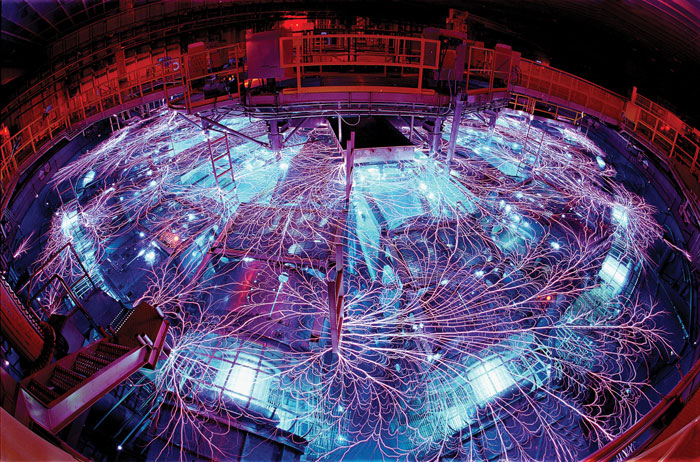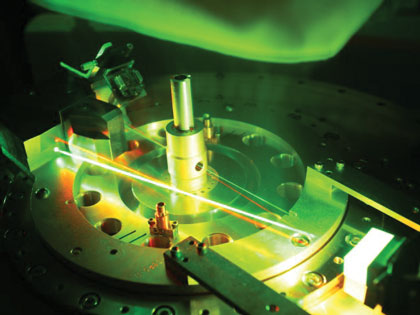When is a planet not a planet? When does it rain helium? How can water be both solid and liquid at the same time? To answer these questions, scientists take the substances that usually make up planets, put them under extreme pressure and see what happens.
One of the most technologically advanced laboratories of all time includes a high-energy laser. It emits a pulse of light that lasts for a fraction of a second, and during this time affects microscopic amounts of the most abundant substances in the universe.
Such a shock wave can create never-before-seen states of matter that exist in the bowels of planets. Either you can get minerals scattered in craters on satellites, or substances that are stuffed with asteroids and meteorites, like careful chroniclers fixing the history of our chaotic past.
Sounds like a quote from science fiction - and on the big screen, the picture resembles a scene from a science fiction movie. But today such experiments are real science, which is being done not in one, but in many high-energy laboratories around the world. This technique is one of the dynamic compression options, characterized by high speed and intensity. With the rapid compression of planetary matter, the processes occurring in the bowels of the planets and during high-energy events, for example, during collisions and impacts of celestial bodies, are reproduced.

« , , », , SLAC -, . - « – , — : , ?»
, , , , — , , , . , , , , .
, . .
,
, , . « … : , », - .
, , , . , , , , .
« 50 , , 1 », — , - ( 1 ). – « – , ». , , , , , , .
« ». « , », – . , . , , , , . « , ».
« », , « , , ». -, , , . .
, , , , , , . 20 , SLAC.
« [] , , », – . .

« , … , », . , , .
, – . ; . . , , ; .
« – , », , , , , , - . , , , [ ] ».
« ». , , , , , , . ( , .)
« , », , . - « , . , ».
.
50% , , , : , . « , ».
, , (CH4 ), (H2O) (NH3) , , . , , , – , .
« », – . , , , . .
, , . , , . , , , .
, , « », , , . , . « », . « , - ».
– «» . «, - , , », – . « , , ?»
- , , « » . « … , , , , – .… , , ».
, , .
, « -, , , , - . ».
, 2018 , «» – , , . « , , », , . . « – ».
, . , Omega Laser Facility , .
« – , , H2O, , », – . - «, , , . , . ».
, ( 200 ), 4 700° C, , . . « , », , .
, , , , . , , , .
- . 1980-, -2. , , , .
. , , , , .
, « – », . , « , «» , ».
, , , , , , .
-. , - , - , . , , , , .
: , . « , », – , « , . , , . , – ».
, , . « , , », – . - « , , ».
« , , , , . », ab initio .
. , , , ? , , , , . , . , .
« ». «- — , , , — , , », – .
« . , : , ».
« . , 10 », – .
4 . , , , , . « » », - - , . – « ».
, , ; . « , . , ? », – . « , , ».
, , , . , , , . « - , , », — . , .
, , « », — . — « , , , - , , , ».
« », – , — « . ». , , , « , ».
, , . : , .

« - », – , — « , ». , , , , , .
, . , . , , , , , – , . , , , , .
, , . « , , », – . — « . , , ».
Eos, , , , , , .